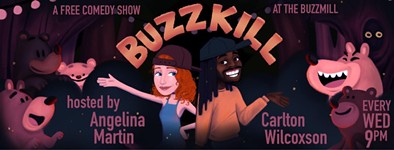El Dia De Los Muertos
Fri., Oct. 30, 1998
Octavio Paz, the great Mexican author who died this year, wrote that for the people of his country life is as much defined by death as it is by how one lives. "Tell me how you die and I will tell you who you are," he wrote. In other words, life and death are one and the same. More than that, life extends into death. Hence, El Dia de Los Muertos. This annual festival – translated into English as Day of the Dead – is the Mexican holiday celebrating death, which, when you consider what Paz wrote, is more like a festival celebrating life in death.
Not to be confused with the moribund concept of death surrounding Christianity and Halloween, Dia de Los Muertos stems more from the Native American tradition of a spirit life after death in which the dead serve as messengers to the gods. In essence, death for the Aztecs and other Native American cultures was merely a change of being or a rebirth into a different world, and they often held ceremonies to celebrate a spirit's passing into that world. In El Dia de Los Muertos ceremonies, like those of its earlier counterparts, the spirits of the departed are the celebration's guests of honor and are depicted as friendly – at times even drunk – skulls and skeletons. In short, there really isn't anything scary about Day of the Dead, unless of course you drink too much tequila and wake up the next morning in a spirit world all your own. Then you'll have plenty to be scared about.
In Austin, Mexic-Arte Museum celebrates the traditional Mexican festival with an annual party. Starting on Friday, October 30 at 6pm, it will host a marching parade through town, from the intersection of Chicon and East Sixth streets to the museum at 419 Congress. The colorful procession includes six-foot traditional puppets called mojigangas, along with a costumed classroom of kids from Sanchez Elementary and a group of cruising lowriders. After the parade, at 7pm, the museum will sponsor a celebration in the gallery that will include an unveiling of a mural titled Day of the Dead as part of the "Colorin Colorado" exhibition presently on display, as well as live performances by musician Johnny Degollado and by the theatre group Teatro Communitario en Español.Traditional Mexican refreshments will be served, and if you come dressed in a festive costume – like a skeleton, an angel, or a devil – you can get in free. Otherwise, it's $2. For a party celebrating dead folks, it sure will be lively. – Sam Martin






